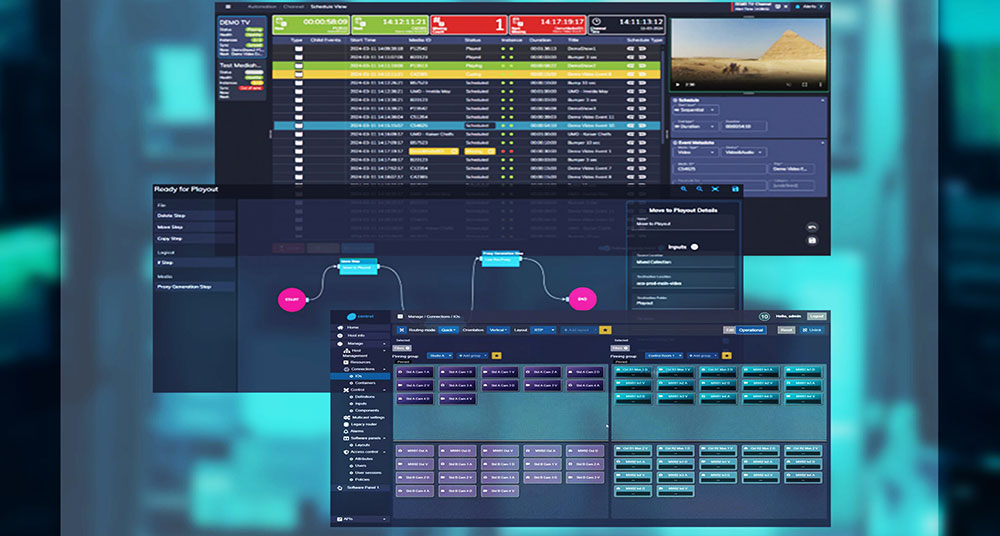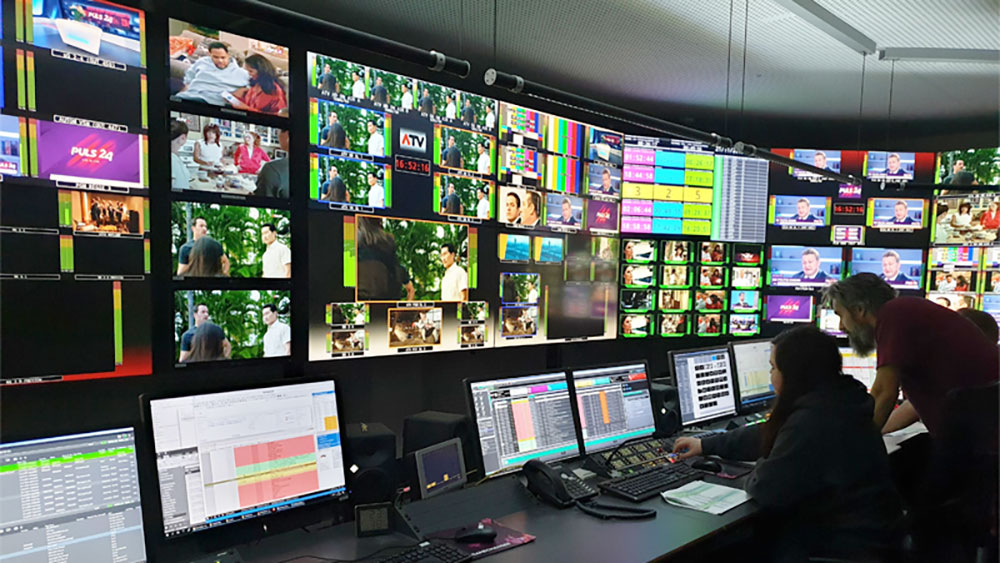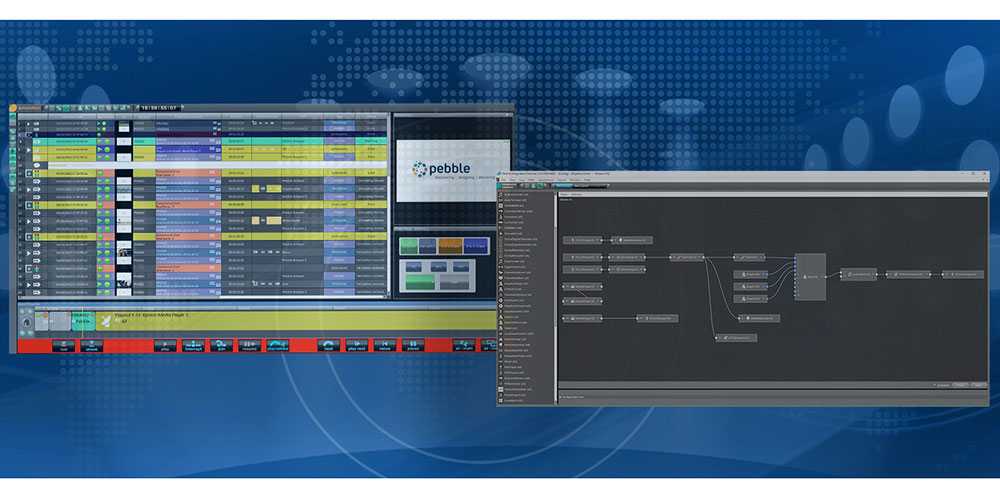Pebble looks ahead to a flexible, secure, scalable future for broadcast via its Prima platform of media tools, supporting channel generation and data workflows, and optimising IP connectivity

PRIMA is Pebble’s software platform for media and broadcast applications. Its services have been designed for flexibility, security and scalability, and to support centralised management. As well as these qualities, Prima prioritises unified control, redundancy and disaster recovery in broadcast operations.
The PRIMA platform’s architecture allows users to scale across on-premises, cloud or hybrid deployments, helping to maintain consistent operation through periods of growth or unexpected change. Its interface is another important feature, designed to make playout management more efficient by increasing infrastructure visibility and control.
Over time, the platform will continue to grow. Meanwhile its first three products address playout, workflow and control.
The Playout software eases channel deployment and management, and emphasises reliability as well as efficiency. Workflow helps users customise and deploy data workflows that integrate an organisation’s networked and cloud storage, and includes a builder to guide workflow design. Control is about device management and signal routing, optimising IP connectivity to result in a control system across the broadcast environment.
Security First
From PRIMA’s development to its deployment, Pebble has made security a top priority. During its development phase, static code analysis for security is employed to address the OWASP Top 10 security vulnerabilities identified by the Open Worldwide Application Security Project, an open source community. Taking this step is a way of making sure that the code is developed securely.
PRIMA encompasses a number of other security features such as detailed permissions management, sessions with a limited duration, Single Sign-On support and mutual authentication via the TLS protocol. It also complies with industry recommendations like EBU R143, and allows users to apply granular permissions.
Alongside security is operational resilience, required to keep services secure and running in the case of loss of power or disaster, system failure or attack. PRIMA users can set up a failover mode that automatically synchronises redundant components with the main system.
The platform’s efficiency is largely owed to PRIMA’s unified control, based on the interface mentioned above. Accessing the organisation’s complete playout infrastructure, this interface is used to schedule and manage workloads dynamically, as they arise, at the same time centralising oversight and management of all workflows.

Because organisations now need to scale their operations quickly to accommodate changes in demand, the platform has a flexible architecture. The software can access resources on-premises, in the cloud or in a hybrid environment so that operations continue uninterrupted as they expand and contract.
Prima’s Tools – Playout
Since playout is what PRIMA – as well as Pebble itself – is all about, it makes sense that PLAYOUT is one of the platform’s initial products. It aims to make broadcast channel deployment and management a straightforward process. Here, the interface tools focus on quick, efficient channel launch, even where the set-up is complex, and the emphasis is on consistency and reliability.
Its capabilities include responsive playlist management and synchronisation, with simple access to playlist statistics and counters, dynamic graphics, subtitling and audio control, giving broadcasters many options for retaining audiences. Users can monitor active and inactive channel instances at low latency with the software’s WebRTC Viewer.
Playout’s graphics functionality supports static PNG graphics, and can be set up to run sequences with an Intro followed by looped content, and then an Outro section before stopping. Further support exists for HTML5 rendering for live third-party applications, and HTML5 native graphics using Adobe Animate Templates with Dynamic Text. For subtitles, users can employ SRT caption files to set up subtitles to display during video playback.
Playout also allows user-customised audio track layouts, for example, rearranging, duplicating and muting tracks for each event. It also monitors and corrects audio levels automatically, in order to comply with loudness standards.
With 1+1 redundancy (where backup components are already active during normal system operation) and playback using both network file-sharing via SMB protocol and S3 Storage, Playout is able to maintain high reliability and continuous operation.
Hosting options for PRIMA Playout are flexible, supporting both private and public cloud infrastructure, and hybrid approaches. For organisations that need to launch channels regularly, these can be created very quickly using templates, and deployed almost error free.
Workflow Orchestration
Another of the core services on Prima is WORKFLOW. Deployable in the public cloud or on-premises, Workflow is used to design custom data workflows through a web interface, helping users to orchestrate steps with complex conditions, and then test and use them. Users have a drag-and-drop canvas within a workflow builder, using it to construct workflows in single or multiple steps.
These may involve moving content from shared Amazon S3 storage, nearline servers, deep archive or standard network storage, configuring and controlling workflows through rules to manage a combination of scenarios. Examples include auto or manual QA, first transcodes, sending to archive and so on. Rules can be triggered either automatically or periodically. Workflow also allows manual invoking of any workflow.

PRIMA and Workflow support broadcasters and media companies transitioning towards IP based systems, either for daily operations, business continuity or disaster recovery.
By viewing files and their technical metadata, an organisation can manage media in such environments more simply. Workflow’s metadata functionality helps users prepare their content, refining content organisation and retrieval, generating proxy files efficiently, and using a proxy player for precisely marking-up content to assist content review and selection processes.
IP-Native Control and Connection
According to Pebble, the choice of a CONTROL system is one of the most important decisions an organisation can make in the design of an IP facility or test installation. Connecting equipment, routing and switching signals around a production facility, playout centre, broadcast station or OB truck is essential. The control system defines the devices the facility can work with, and the type of workflows that depend on that control system.
The Pebble R&D team’s move into broadcast control development, based on the company’s experience in playout automation, has resulted in PRIMA Control – scalable, IP-native, control and connection management software that users configure, deploy and operate using web-based UIs.
It serves as a device control framework that interfaces with IP and SDI devices from various vendors on the network via the most recent NMOS APIs and common control and routing protocols. This makes it as simple as SDI to change interconnections or add or remove devices. Pebble’s services have been tested by the Joint Task Force on Networked Media (JT-NM) as a part of the NMOS ecosystem.
In short, Control supports plug-and-play operation for both IP and SDI networks. It is also designed to operate with most sizes and types of IP deployments, from small IP test set-ups to enterprise systems. Control speeds up the discovery, location and organisation of users’ devices. Built-in compatibility checking helps avoid making invalid connections, and the ability to set favourites means the operator can manage the connections of the most frequently switched devices. www.pebble.tv




















